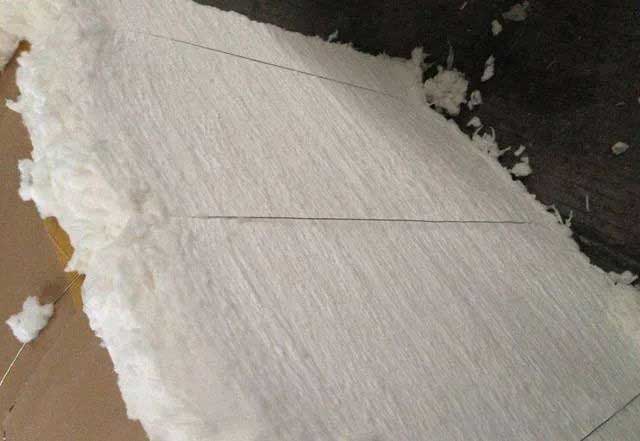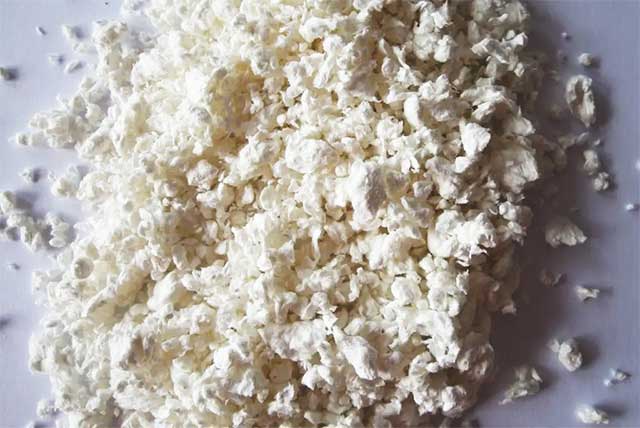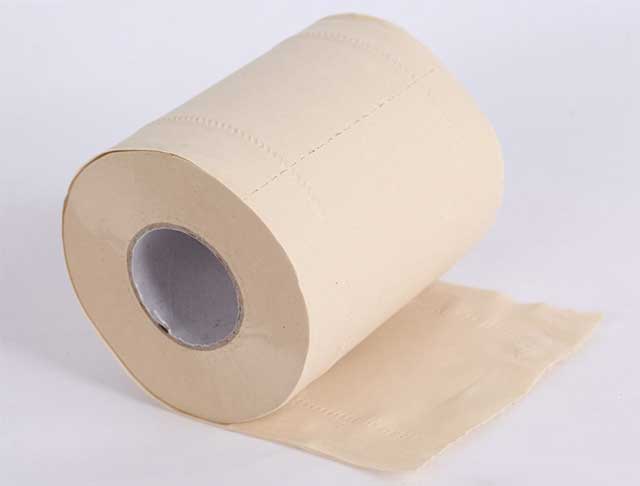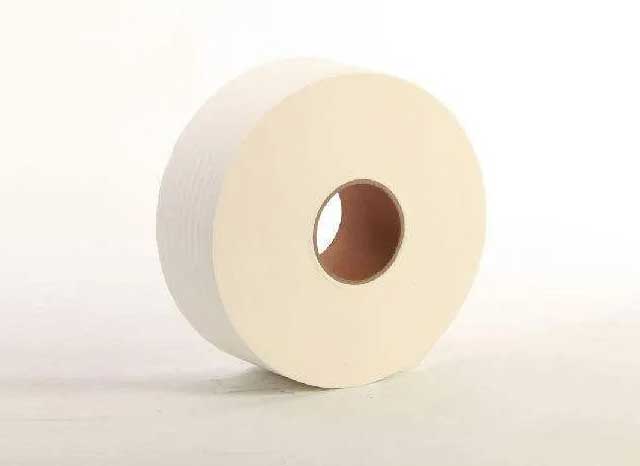+86-18927501869
- All
- Product Name
- Product Keyword
- Product Model
- Product Summary
- Product Description
- Multi Field Search
 English
EnglishViews: 2208 Author: Allen Yi Publish Time: 2025-01-29 Origin: Site

Toilet paper is one of those household items we use every day without much thought. But have you ever wondered how it's made or what goes into creating that soft, reliable roll in your bathroom? In this comprehensive guide, we'll take you through the journey of wood pulp to toilet paper, exploring the manufacturing process, environmental impacts, and how to choose the best product for your needs. Whether you're a consumer looking for eco-friendly options or simply curious about the science behind toilet paper, this article has you covered.
Toilet paper is primarily made from wood pulp derived from trees. However, not all toilet paper is created equal. The product's quality, softness, and strength depend on the type of wood pulp used and the manufacturing process. Let's break it down:

Wood pulp is the fibrous material derived from wood, typically sourced from trees such as softwood and hardwood. It is a primary raw material used in paper production. Wood pulp undergoes processing, including chipping, pulping, and bleaching, to remove impurities and create high-quality paper.

• Virgin Pulp: This is made directly from trees, typically softwood trees like pine or spruce, or hardwood trees like eucalyptus. Virgin pulp is known for its strength and softness, making it a popular choice for premium toilet paper brands.
• Recycled Pulp: This pulp is made from recycled paper products, such as office paper, newspapers, and cardboard. While recycled pulp is more environmentally friendly, it often requires more processing to achieve the desired softness and strength.
• Bleached Pulp: To achieve that bright white color, many manufacturers bleach the pulp using chlorine or chlorine-free methods. Chlorine-free bleaching is more environmentally friendly and reduces the release of harmful chemicals into the environment.
• Unbleached Pulp: This type of pulp retains its natural brown color and is often used in eco-friendly toilet paper products. While it may not look as pristine, unbleached toilet paper is just as effective and is a better choice for those looking to reduce their environmental impact.
In summary, wood pulp is the general term for pulp derived from wood. Virgin wood pulp specifically refers to pulp obtained from freshly cut trees, while the recycled pulp is derived from recycled paper products. Each type of pulp has its own characteristics and applications in various industries, including paper manufacturing.
Chinese Sywipe tissue manufacturers can summarize these different wood pulp papers into a picture, as shown below:

The journey from wood pulp to toilet paper involves several key steps, each of which plays a crucial role in determining the final product's quality. Here's a step-by-step breakdown:
The process begins with the creation of wood pulp. Trees are debarked and chipped into small pieces, which are then cooked in a chemical solution to break down the lignin (the glue that holds wood fibers together). This results in a fibrous material that can be further processed.
The pulp is then washed and cleaned to remove any remaining chemicals or impurities. If the toilet paper is to be bleached, this is the stage where it happens. The bleaching process not only whitens the pulp but also helps to soften it.
The cleaned and bleached pulp is then pressed into large sheets and dried. These sheets are then rolled onto large spools, ready for the next stage of production.
The dried sheets are passed through a machine called a creper, which scrunches the paper to give it the soft, textured feel we associate with toilet paper. Some brands also add embossing patterns to enhance the paper’s strength and absorbency.
Finally, the paper is cut into the desired width and length, and then rolled onto cardboard tubes. The rolls are then packaged and prepared for distribution.
• Affordability: Wood pulp toilet paper is typically more cost-effective than many alternative materials like bamboo or recycled paper. This makes it a budget-friendly choice for households and businesses that need a high-volume supply of toilet paper.
• Softness and Comfort: Wood pulp toilet paper is known for its soft texture. The pulp is processed to create a smooth, gentle surface, which is comfortable for sensitive skin, making it ideal for everyday use. Softness is one of the top priorities for consumers when selecting toilet paper, and wood pulp delivers on that front.
• Strength and Durability: Wood pulp paper is strong and durable, meaning it won't tear easily during use. This makes it more effective and reliable compared to other papers that may fall apart or leave residue behind.
• Widely Available: One of the primary reasons wood pulp toilet paper is so popular is its availability. It's easy to find in most stores and comes in a variety of plies (single, double, and triple), making it accessible for different preferences and needs.
• Ease of Manufacturing: The process of converting wood into pulp is a well-established and efficient one. This allows manufacturers to produce toilet paper in large quantities without significant delays, ensuring a steady supply at affordable prices.
| Pros | Cons |
Soft and comfortable for sensitive skin | Environmental impact due to deforestation and water use |
Strong and durable, reducing the need for excess sheets | Chemical bleaching processes may introduce harmful substances |
Affordable and widely available | Not as eco-friendly as alternatives like bamboo or recycled paper |
Easy to manufacture and produces in large quantities | Contributes to landfill waste after use |
The production of toilet paper has a significant environmental impact, particularly when it comes to deforestation and water usage. Here are some key considerations:
The demand for virgin pulp has led to the destruction of millions of acres of forests, particularly in Canada and South America. This not only contributes to climate change but also threatens biodiversity and indigenous communities.
The pulping and bleaching processes require large amounts of water. While many manufacturers have implemented water recycling systems, the industry as a whole still has a long way to go in terms of reducing its water footprint.
The chemicals used in the pulping and bleaching processes can be harmful to both the environment and human health. Chlorine, for example, can release dioxins, which are highly toxic and can persist in the environment for years.
Many companies are now turning to recycled pulp and sustainable forestry practices to reduce their environmental impact. Look for toilet paper brands that are certified by organizations like the Forest Stewardship Council (FSC) or the Sustainable Forestry Initiative (SFI).

• Natural-Colored Paper: Made without bleaching, retaining its original hue. It is rougher and harder, with lower water resistance.
• White Paper: Achieves high brightness through chemical bleaching. It is smoother but may contain more additives.
• Usage: Both types have unique aesthetics and textures. The choice depends on personal preference and sensitivity to chemical additives.
• Hygiene Standards: Toilet paper allows up to 500 colony-forming units (CFUs) per gram, while facial tissue allows only 200 CFUs per gram.
• Health Risks: Using toilet paper for wiping the mouth can spread bacteria via the respiratory or digestive tract, potentially causing diseases like enteritis or dysentery.
• Quality Grades: Facial tissues are categorized as superior, first-grade, and qualified. Superior tissues offer the best quality, with first-grade being slightly lower and qualified being the least.
• Additives: Scented or printed papers may contain inks or fragrances that can transfer to the mouth and affect health.
• Labeling: Disinfection-grade products must be clearly labeled, while napkins and tissues should not claim disinfection, medicinal, or health benefits.
• Shelf Life: Dry toilet paper typically has a shelf life of 2-3 years. Expired paper can harbor bacteria.
• Facial Tissues and Wipes: Designed for facial cleaning, they are soft and gentle on the skin, meeting high hygiene standards. They remain strong even when wet, preventing paper residue on the face.
• Toilet Paper: Moderately soft, primarily used in bathrooms. Qualified products are safe for human use.
• Wet Wipes: Contain antibacterial agents, suitable for cleaning hands when water is unavailable. They are not recommended for facial use due to potential irritation from antibacterial components.
• Kitchen Towels: Excellent for absorbing water and oil, with larger and thicker surfaces, ideal for cleaning kitchen utensils, windows, mirrors, and tables.
• Function: Serve as hygienic and comfortable protective pads for toilet seats, preventing cold sensations in winter.
• Design and Material: Available in various shapes based on toilet design, with materials like cotton, leather, bamboo charcoal, and paper. Public places commonly use thin, transparent paper pads with bright patterns and colors.

Using low-quality tissues can pose various health risks. Here are some potential hazards associated with poor-quality tissues:
Manufacturers often use recycled paper to produce toilet paper. To improve its appearance, texture, and color, they may add deinking agents and talc. Regularly using such toilet paper to wipe the mouth can introduce harmful substances into the body, potentially damaging the nervous and blood systems.
Tissues made from recycled paper may contain bacteria and fungi. Although disinfected during production, some microorganisms may remain. Using these tissues can increase the risk of enteritis, dysentery, and even hepatitis.
Dermatologists note that long-term use of low-quality toilet paper increases the chances of skin contact with bacteria and fungi, leading to allergic issues such as dermatitis. Children and women, with their delicate skin, need to be particularly cautious in this regard.
Poor-quality toilet paper may retain brightening agents and talc. When wiping the mouth and nose, dust can enter the respiratory tract through the nasal cavity, causing respiratory diseases.
To reduce these risks, it is crucial to choose high-quality tissues that meet safety standards and come from reliable sources. Paying attention to hygiene and selecting reputable brands when using tissues can help safeguard your health.
With so many options on the market, choosing the right toilet paper can be overwhelming. Here are some factors to consider:
While softness is often the top priority for consumers, it's important to find a balance between softness and strength. A toilet paper that's too soft may not hold up well, while one that’s too strong may be uncomfortable.
Toilet paper comes in single-ply, double-ply, and even triple-ply options. Generally, the more plies, the thicker and more absorbent the paper will be. However, more plies also mean more material, which can increase the environmental impact.
If reducing your environmental footprint is important to you, look for toilet paper made from recycled materials or sustainably sourced virgin pulp. Also, consider the packaging—opt for brands that use minimal or recyclable packaging.
While it’s tempting to go for the cheapest option, keep in mind that higher-quality toilet paper may last longer, ultimately saving you money in the long run.
As consumers become more environmentally conscious, the toilet paper industry is evolving to meet new demands. Here are some trends and innovations to watch for:
Bamboo is a fast-growing, renewable resource that requires less water and land than traditional wood pulp. Bamboo toilet paper is becoming increasingly popular as a more sustainable alternative.
Some companies are now offering compostable and biodegradable toilet paper, which breaks down more easily in the environment. This is particularly appealing for those who use septic systems or composting toilets.
Innovations in packaging, such as reduced plastic use and more efficient roll designs, are helping to reduce waste and improve sustainability.
Many brands are now offering subscription services, allowing consumers to have toilet paper delivered directly to their door regularly. This not only adds convenience but also helps to reduce the carbon footprint associated with frequent trips to the store.
Toilet paper is a staple in households around the world, and its quality largely depends on the type of pulp used in its manufacture. The main types of pulp used include virgin wood pulp, recycled pulp, and straw pulp. Each type of pulp has unique characteristics: Virgin wood pulp ensures strength and softness, recycled pulp promotes sustainability, and straw pulp advocates environmental protection. However, the choice doesn't end with toilet paper. The household paper tissue sector includes a variety of types, each with a specific purpose — from facial tissues to kitchen paper. The importance of making wise choices cannot be overstated, especially considering the health risks that inferior products may pose. Whether you're choosing tissues or toilet paper, understanding the materials and their implications is crucial.
About Clean-Wipe: At Sywipe, we're committed to providing you with high-quality, eco-friendly toilet paper that meets your needs without compromising the planet. Explore our range of products and learn more about our sustainable practices at www.clean-wipe.com.
• What Are the 10 Magical Uses of Kitchen Paper Towels?
• What Is the difference between bamboo pulp paper and wood pulp paper?
• What Are the 10 Tips to Clean Kitchen Grease Using Paper Towels?
Our Customers Always Come First
Trust is the Foundation of Our Service
sales@clean-wipe.com
sywipe@clean-wipe.com
Room 4611, No. 372 Huanshi East Road, Yuexiu District, Guangzhou,China.
+86-18927501869 / +86-20-81608597
/ +86-18927501869